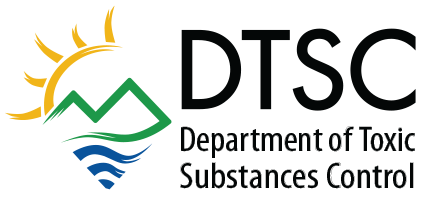California Environmental Quality Act (CEQA) Quick Reference Guide
What is CEQA?
The California Environmental Quality Act (CEQA) is a statute that requires all California public agencies to identify and disclose the potentially significant environmental effects of their proposed activities and avoid or mitigate those effects, if feasible. CEQA applies to all actions or activities managed under Department of Toxic Substances Control (DTSC) Voluntary Agreements.
When is it Needed?
DTSC must comply with CEQA when considering the approval (a discretionary decision) of a cleanup plan. This discretionary decision is only defined under CEQA as a “project” if there is either a direct or indirect physical effect on the environment. DTSC remedies/cleanups under the voluntary program are outlined in a “decision document” (e.g., Removal Action Work Plan or Response Plan). Examples of activities subject to CEQA evaluation include soil or pavement capping, excavation and off-site treatment and/or disposal, on-site treatment, or the installation of engineering controls such as vapor barriers.
What is the Process?
DTSC Project Managers work with DTSC Environmental Planners to ensure CEQA compliance by implementing an internal consultation process to determine the CEQA strategy as soon as sufficient information is available. First, DTSC will determine if the project qualifies for an exemption (Notice of Exemption). If the project does not qualify for an exemption, DTSC will prepare an Initial Study (IS) to determine if a Negative Declaration or a Mitigated Negative Declaration is the appropriate CEQA document. If there are impacts that are still above thresholds, an Environmental Impact Report (EIR) is developed. In some instances, DTSC’s cleanup is included as part of a larger project and another agency acts as the “Lead Agency” under CEQA. In these cases, DTSC would then act as a “Responsible Agency.” As a Responsible Agency, DTSC independently determines if the Lead Agency’s CEQA document addresses all potential impacts from DTSC’s project activities or if additional analysis is required. DTSC may prepare a Responsible Agency Checklist, Statement of Findings, Addendum, or a Supplemental (EIRs only) or Subsequent document to augment the Lead Agency’s CEQA document. In all cases, potential environmental effects of the proposed action are identified and analyzed. For voluntary projects, DTSC staff usually take the lead on the development of CEQA documents.
Can it be Modified?
Both the cleanup decision and related CEQA documents, except for Notices of Exemption or Addendums, are subject to public review and comment; therefore, the public outreach and notification process for both are generally held concurrently.
Public Resources Code Sections 21000-21177 and State CEQA Guidelines 14
California Code of Regulations 15000-15387
For more information, contact: Jose.Salcedo@dtsc.ca.gov
Download a collection of all DTSC Voluntary Agreements Quick Reference Guides
Download PDF version of this diagram.
This document is intended to be guidance only and it does not supersede or implement laws or regulations. The information in this advisory is intended solely as guidance and as educational reference material and should not be considered enforceable or regulatory in nature.
Brownfields Links
Quick Reference Guides
- Removal Action Work Plan (RAW) Quick Reference Guide
- CLRRA Response Plan
- Public Engagement & Tribal Engagement Quick Reference Guide
- CEQA Quick Reference Guide
- CEQA Process Diagram
- Additional Remedy Selection Quick Reference Guides Under Development - Coming Soon
Site Mitigation & Restoration Program Links
- Brownfields
- Cleanup in Vulnerable Communities Initiative (CVCI)
- EnviroStor
- Exide
- Human and Ecological Risk Office
- Lead-Acid Battery Recycling Facility Investigation and Cleanup Program
- Loans & Grants
- Land Use Restriction Sites
- Santa Susana Field Laboratory
- School Sites
- Sea Level Rise
- State Superfund Program
- Strategic Plan and Program Enhancement Work Plan
- Vapor Intrusion
- Contact Information


